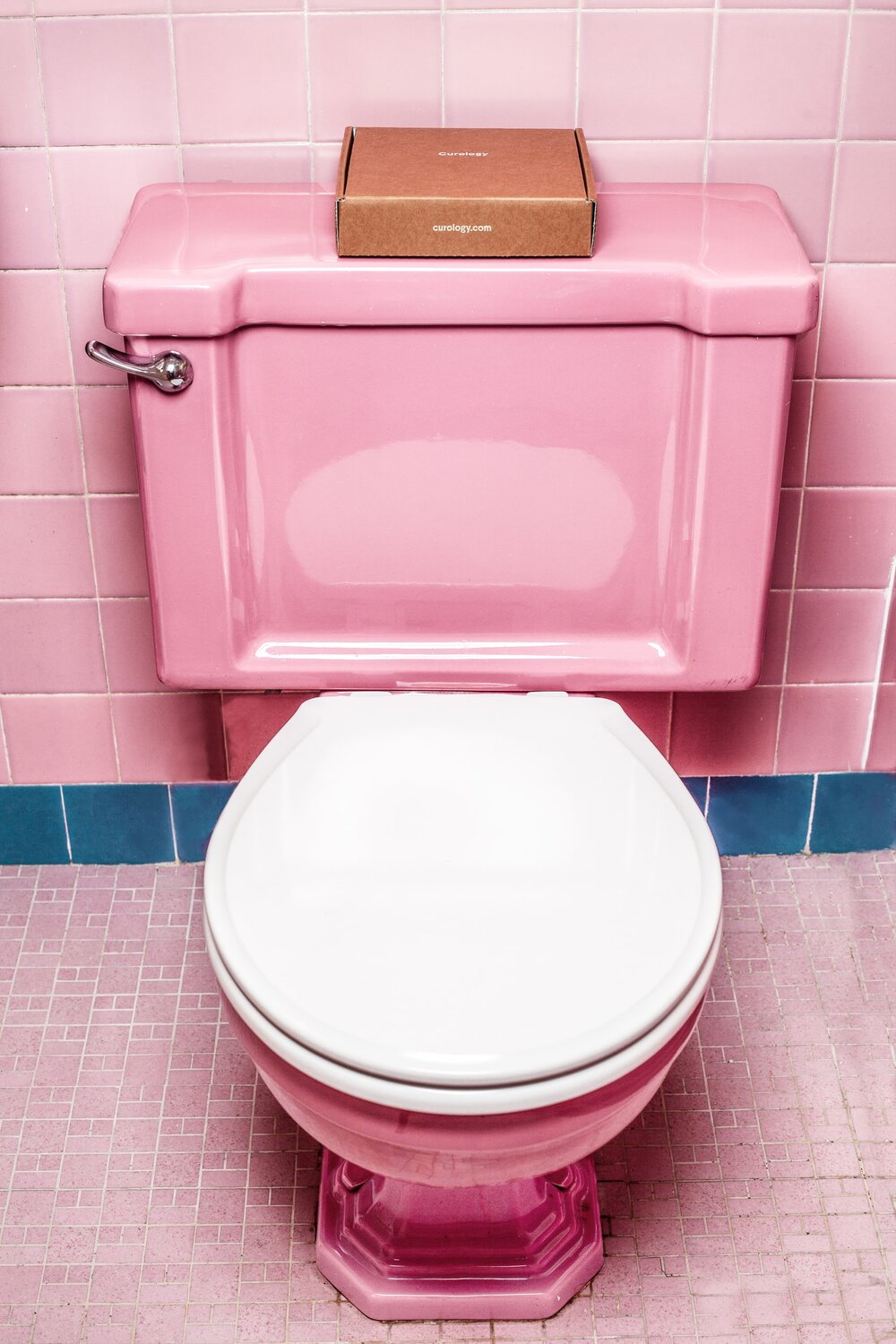How Exercise Can Prepare You to Push During Labor
Learn how to train for your birth marathon

Did you know that during birth, your body expels three times the amount of oxygen as a runner during a marathon?
Where a marathon runner probably has a coach, you’ve got your birth team. Your midwife, doula, and/or labor and delivery nurse and partner may all take turns coaching you across the “finish line.” As critical as these team members are to helping you have a successful experience, you’ve got to train to push during labor.
Instead of waiting for the big day, you can practice feeling and moving through these sensations ahead of time by using exercise to mimic the labor experience. With a little work, you can train your muscles properly and harness the innate ability of your deep core and pelvic floor to help with the act of pushing your baby.
Your ability to manage and control your headspace and use your breath will also be key to moving through the waves of intensity. You’ve got to train your mind too, mama. Diaphragmatic breath can help act as a powerful pain reliever and a calming force to help you focus on the “work” at hand. But you have to know how and when to deploy it.
1. Use “the push breath.”
Your breath is one of your best and most powerful tools when it comes to the final stage of labor. Using what we like to call the “the push breath,” you’re better able to stay calm while tapping into your core and pelvic floor muscles and making them work for you, not against you.
When the contractions are coming fast and furious it can be hard to focus on anything. If you’ve been practicing by using your breath to push through those last few reps of a difficult exercise, for example, you’ll be better able to tap into that same technique in the heat of the moment.
But how does it work during your baby’s birth? Start by inhaling at the beginning of a contraction. If the inhale can be a diaphragmatic breath, amazing. If not, that’s okay too! As you exhale, engage your TVA muscles as if you are hugging baby. This helps you use the “corset muscles” to push baby down the birth canal.
This is where it can get tricky: as you engage your deep core, relax and lengthen your pelvic floor muscles, opening the vaginal space to welcome baby earthside. Want to give it a try? Keep reading to get the scoop on our “push practice” exercise below.
2. Be careful of the cue “push like you’re pooping.”

The experience of pushing during birth is often compared to pushing like you’re having the biggest bowel movement of your life. And while there is some merit to this, when you focus on pushing this way you can risk other complications like hemorrhoids and vaginal tearing.
Pushing effectively during labor requires more than mimicking your last trip to the toilet. Instead of engaging your pelvic floor when pushing, you need to lengthen and soften. A more helpful visual is imagining your core and pelvic floor as a giant tube of toothpaste. The top of the tube is right below your ribcage, and the opening is your vagina. Your transverse abdominal muscles [TVA] are like your fingers, squeezing the top of the tube so that the toothpaste comes out the bottom [your pelvic floor muscles].
In this beautifully synchronized system, the top engages to push the paste down and the bottom must remain open for it to come out. If there is a clog at the bottom [aka tight or engaged pelvic floor muscles] the paste is harder to get out.
3. Toss out the lists of “what to expect” during this phase of labor.
So many of these lists are full of contradictions.
You might experience pain with contractions during the pushing phase, but maybe you won’t.
You might experience “an overwhelming urge to push” but not every woman feels that.
You might experience a huge amount of rectal pressure, but that’s not a given.
You might get your second wind! But then again you might just feel fatigued.
Catch our drift?
Instead of memorizing a list of what may or may not go down during your birth experience, focus on what you can do now by training your pelvic floor and TVA and experimenting with how to use breath as a tool to improve your pushing technique.
4. Prepare, train, and prepare some more to push effectively during labor.
Birthing women, in all their power and voluminous glory, often remind us of the buffalo. Majestic (and perhaps fearsome in some moments!) are capable of feats of strength and endurance. When you trust yourself and your innate abilities regarding birth, your experience becomes exactly what it was destined to be.
Labor is a dance. Sometimes one step forward, two steps back. Sometimes side-to-side. Occasionally involving some gymnastics! For all of that, it is your first chance to dance with your baby(ies) and signifies the mother/child bond that continues throughout our lifetime.
Birth isn’t just about strength, but it isn’t just about surrendering either. Birth is the wave where our ability to surrender joins forces with our body’s strength.
5. It’s time to practice pushing during birth.
We’ve touched on using bowel movements, helpful visuals like the tube of toothpaste, and breath as tools to connect with how to push during birth. But what if you need or want more? You can use your menstrual cup as a push prep tool.

→ Before you start
Get clearance from your OB or Midwife before jumping on our bandwagon. We want to ensure that your body and pregnancy support this tip. While most expecting women will have zero problems, a low-lying placenta or severe level prolapse (for example) would need your doctor to give you the green light before proceeding.
→ You’ve got the green light, now:
Dig out your menstrual cup. We know you didn’t think you’d be seeing this girl for a hot minute but we always have tricks up our sleeves!
While we often recommend a few of our personal favorites like the Dot (pictured above) or Lunette Cup, finding the perfect fit for you is a crucial piece in this.
→ NEXT: Get comfy, and by all means do not overthink this.
If the toilet is your jam go for it, but it’s not necessary for this practice. If in a chair or bed, open your legs to a wide comfy position (pillow support at the knees can feel really good here).
INSERT the cup! Once inserted, pull it out by its tip (using your fingers) about 30 to 40 percent of the way.
→ NOW: your push prep begins and this is where the magic happens.
Engage your abs slightly (hug baby) and lengthen your pelvic floor muscles. Use that gentle lengthened state to use your pelvic floor muscles to push out the last 60 to 70 percent of the cup.
Don’t worry, it won’t go flying across the room (although if it does, maybe check in w/ a PF physio before proceeding). You will probably have to use your hands to actually remove the cup from your vagina.
WOW: right? Pretty impressive how much of a game-changer this is in understanding the role of the pelvic floor and pushing.
→ Extra Credit
Once you’re comfortable with this practice, try it in various positions, like those you might want to labor in: deep squat, side-lying, and all fours, for example.
It’s important to remember that your body has everything it needs to push your baby out during birth. But like everything we teach, the more prepared you are the better. Getting creative with smart techniques that help empower you and your birth experience is our jam so we spread that goodness where we can.
Now that you have some powerful tools for pushing, get to know our innovative Birthprep fitness class. We won't practice pushing while we burn out your muscles, but we will introduce you to an empowering way to train for your birth marathon!
When you train for birth, we hope you choose to go beyond simple exercise and tap into a new form of birth marathon training. BIRTHPREP classes will provide you with a new level of confidence and full embodiment preparation for YOUR birth experience.



